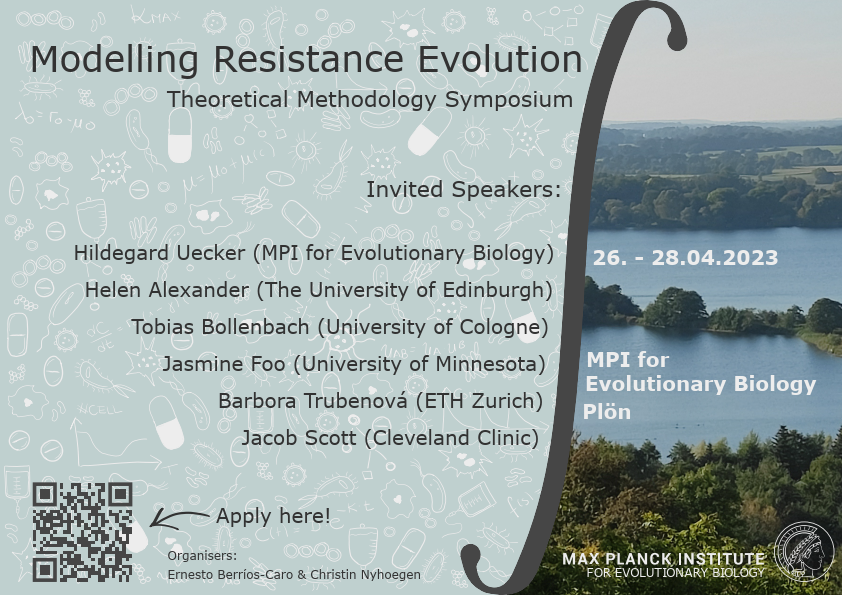Speaker
Description
Evolution of drug resistance is contingent on sufficient mutational supply as well as successful establishment of the initially rare resistant cells that are subject to stochastic extinction. Importantly, the potential for resistance evolution strongly depends on the drug concentration that not only directly affects the strength of selection, but also impacts the required mutational targets, probability of establishment as well as the mutational processes that generate genetic and phenotypic variability. Quantifying the risk of drug resistance along a concentration gradient thus represents a highly important but challenging task, because this requires factoring in the various complex dose-dependencies none of which are easily empirically investigable. In this contribution we present a fitting method which allows the inference of dose-dependent establishment rates from evolutionary rescue data and present theory which can then be used to compute optimal treatment strategies. We also refine the concept of establishment threshold and discuss its implications for resistance evolution. References: [1] Kuosmanen T, Cairns J, Noble R, Beerenwinkel N, Mononen T, et al. (2021) Drug-induced resistance evolution necessitates less aggressive treatment. PLOS Computational Biology 17(9): e1009418. https://doi.org/10.1371/journal.pcbi.1009418 [2] Kuosmanen, T., Särkkä, S., & Mustonen, V. (2022). Turnover shapes evolution of birth and death rates. bioRxiv, 2022.07.11.499527; https://doi.org/10.1101/2022.07.11.499527

